Pollen Power: Exposing Girls to Pollen— and Possibly STEM Careers
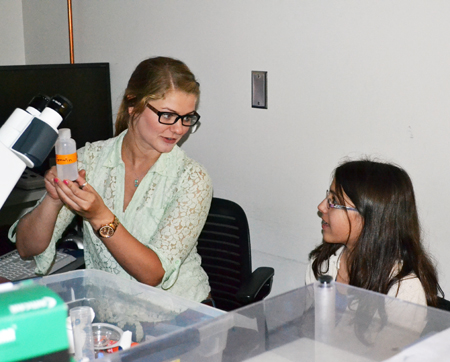
Grad student interacts with a middle school student during one of the camp's sessions.
July 24, 2013
The 27 middle school girls who participated in Pollen Power camp July 8–12 not only learned about the importance of pollen. They were exposed to the technology researchers use to study it, and to female researchers and graduate students, who both taught them and served as role models. In using mostly women, Pollen Power organizers sowed this seed that they hope comes to fruition in these girls' lives: they too can follow in these women's footsteps.
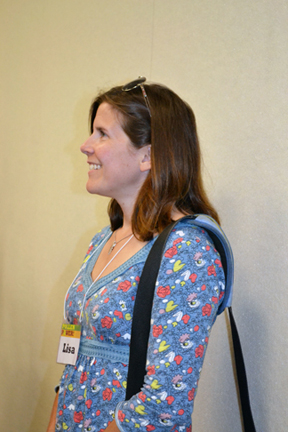
PI Lisa Ainsworth enjoying the videos the campers made for the final presentation.
Funded by a 5-year National Science Foundation grant, and sponsored by the Institute for Genomic Biology, Pollen Power camp intentionally targeted middle schoolers for their outreach. Lisa Ainsworth, Principal Investigator of the grant, explains.
"We chose middle school girls, in part, because that's an age when kids start to lose their interest in math and science."
Co-PI Andrew Leakey unashamedly admits that one of the goals of the program is to get kids interested in STEM (science, technology, engineering, and mathematics). He agrees that middle school students are at a key age in the STEM pipeline—the idea that to meet our nation's need for people in STEM fields, we must get youngsters interested in STEM by exposing them early and often, so they ultimately choose STEM careers. Leakey goes on to cite research:
"There, we were really interested in groups that are falling out of the training pipeline to become professional scientists. And from the literature I've read, middle school was a really key stage where a lot of people lose interest."
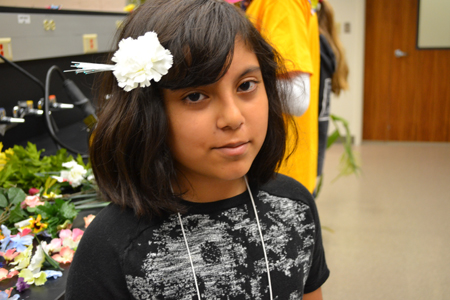
Camper models the fiber optics barrette she made for her hair.
Why focus on girls? Says Ainsworth, "We wanted to target girls as well, because in lots of aspects of science, they're underrepresented—not necessarily in biology—but certainly in physics and computer science and some of the other sciences."
As for reaching out to girls, Leakey acknowledges that his interest is a bit more personal: "I have two daughters, so I'm slightly biased toward the interest of girls, I have to confess…That's obviously one group that we're not getting through the training program as far as we would like."
To pique the interest of the girls who attended Pollen Power, the camp exposed them to a number of disciplines, all revolving around the central theme of pollen. One emphasis was biology and sustainability, and something else most middle schoolers are interested in—food.

Andrew Leakey, Co-PI on the project.
"The camp was really designed to try to show middle school girls some really interesting biology linked to climate change and food production, and all associated with the role that pollen plays in plant reproduction," says Leakey. "Because the vast majority of what we eat is the product of successful pollination. All of our food depends on that happening."
The camp's emphasis on technology is only natural, given the importance of some of the tools used to study pollen, such as microscopes, imaging, and computers: "But at the same time, to do that biology well," adds Leakey, "we need to image the pollen and use computers to count the pollen and how successfully it's germinating." Thus, he indicates that the camp also exposed the girls to how microscopes work, the physics of light, and computer science.
In addition to cutting-edge imaging and microscopes, girls visited the Pollinatarium, where one of the highlights was a sighting out the queen bee in a real bee hive; made flowers for their hair out of fiber optics; and for the final presentation, made "news cast" videos reporting on all they had learned.
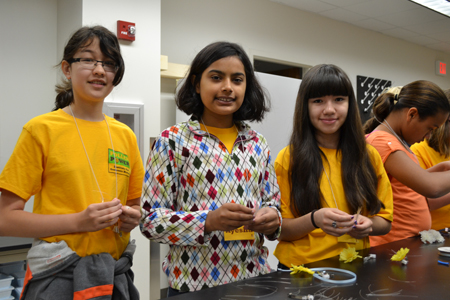
Campers working on their fiber optic barrettes.
Were the girls impressed? "This is a tough age. Twelve-year-olds are a tough crowd," admits Ainsworth. "They're hard to impress at this age, and so you have to work pretty hard. But it's formative years, so it's important to get them positive role models at this age as well."
Thus, female role models was an important emphasis of the camp, to encourage the girls that they too could one day be a grad student or researcher. To build upon the idea of female students as camp counselors and instructors, Ainsworth hopes in the future to implement a model she coins "stepping stones." This would also include female undergrad and even high school students, thinking campers might even more easily identify with younger students.
"It's not easy for them to imagine themselves as my age," reasons Ainsworth, "but it's easy for them to imagine themselves as high school students, and so they can see themselves working in labs. And maybe they see an undergrad, and they're a little older, but they can see that in their future. And then you have the graduates as well. You kind of have the stair steps up to a future. That's hopefully what we can build into this in future years."
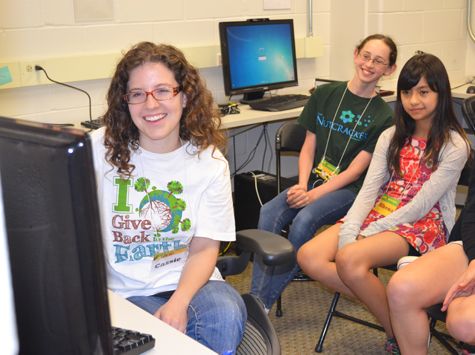
Cassie Wesseln, left, and some campers enjoy graphics created with special imaging software.
One of the gradutate students who served as a role model in this year's edition of Pollen Power is Cassie Wesseln, who is working on a Ph.D. in Paleobotany. Invited to serve as one of the camp's counselors and instructors on the basis of her pollen expertise, she was excited to share some of what she has learned about the importance of pollen, claiming that the girls are "learning about a world that a lot of people will never know about."
Wesseln believes that the camp, in addition to teaching the girls about pollen, will influence some of them to choose careers in STEM: "I think it's interesting enough and important enough where all these girls will walk away at least thinking about, 'Hmm, can I become a grad student one day? Or can I go into science and study pollen?' It may not be exactly pollen, but at least they're seeing this biological concept and the tools we use to study it. I think it's going to encourage a lot of these girls to follow through into STEM."
Did the camp organizers hope to get the girls to choose careers in pollen research, specifically, or just STEM in general? Says Ainsworth: "Just in STEM. Just retain interest, and maybe the confidence that they can do it, and that it can be fun as well."
Leakey sums up the goals of the camp in a nutshell: "So it's an opportunity to present them an interdisciplinary science problem at a time when in their education they might not recognize the value of that, and then at the same time expose them to female graduate students who are good at this."
Story and photos by Elizabeth Innes, Communications Specialist, I-STEM Education Initiative.
More: 6-8 Outreach, Pollen Power, STEM Pipeline, Summer Camp, Women in STEM, 2013
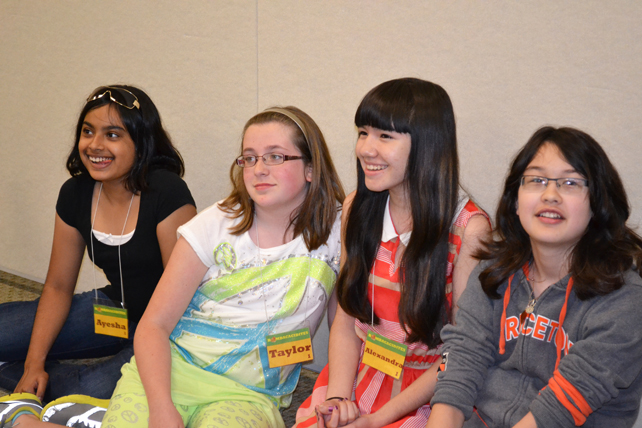
Along with other Pollen Power campers, the girl to the far left enjoys watching a video of herself making a presentation (see below) about the importance of pollen. The videos were presented during the final event on the last day of camp.
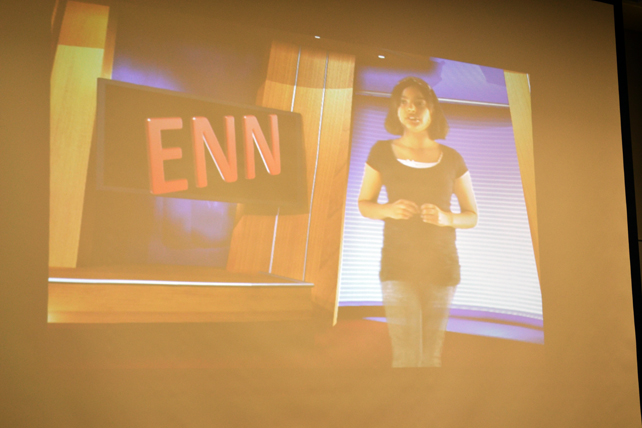













.jpg)
















